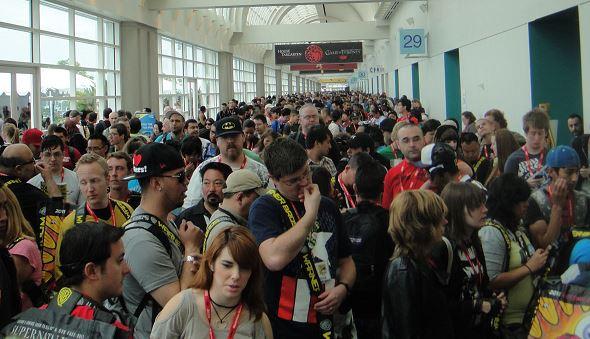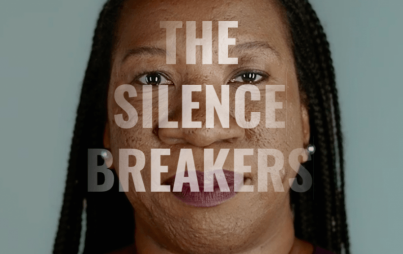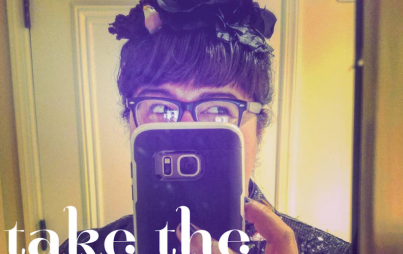
San Diego Comic Con (Credit: Wikimedia Commons)
Every woman I know who regularly attends comics conventions—cons—has a story. We compare them like trading cards while we talk about which parties to avoid, which editors have a reputation for getting handsy after a few drinks. These are the things we tell each other, take new kids aside and whisper in their ears: which cons will have your back if you report a harasser, which colleagues you can trust to walk you back to your hotel. We make plans, check in, watch each other's drinks at professional events, watch each other's backs on the con floor.
A little over a year ago, I wrote an article for Wired.com; it was a crunchy social-science piece on the social phenomena that contribute to harassment at conventions, and the urgent need for formal and enforced harassment policies. It came out on the eve of San Diego's annual international Comic-Con, in the midst of a flurry of conversation about con harassment—one that had been going on for decades in private and was now suddenly in the public eye.
The most recent incidents at that point had taken place at Readercon, a science fiction convention held in Boston in July, and Wiscon, which had taken place a month earlier in Madison, Wisconsin. Emboldened by new reports, dozens of women had come forward with similar stories, spanning decades. Suddenly, harassers were being named in public blogs. The science-fiction author John Scalzi posted a pledge only to attend conventions with explicit and well-publicized harassment policies. The science fiction and fantasy (SFF) community was cross-referencing with the skeptics.
And conventions, it seemed, were finally starting to take note—with a few prominent exceptions.
San Diego Comic-Con International (SDCC) operates at a completely different scale from the smaller, 850-person Readercon. It's a four-day extravaganza, the largest pop culture convention in the English-speaking world. In 1970—the first year it opened its doors as Golden State Comic-Con—it had 300 attendees; for the last three years, it's been forced to cap badges at 130,000. People stay up all night for the hotel lottery; people have died in SDCC lines.
And SDCC is where the comics community goes to play at being rock stars. What happens at San Diego, we say, stays at San Diego—either the show proper, or the unofficial "barcon" where the industry gathers after hours. The first year I went—the year a friend warned me to pack shoes in which I could not only stand all day, but also run and kick—I sat at a swanky dinner party, listening to a group of creators and publishing pros compare bar-fight stories from years past. That year, a guy with a "free hugs" sign followed me across three rooms and cornered me, until two friends—tall, imposing guys—finally got him to back off.
SDCC has a harassment policy of sorts—a single, vague line in their paragraphs-long Code of Conduct: "Harassing or offensive behavior will not be tolerated." It's buried deep in the program, deeper still on the website: it's nearly impossible to find if you're not looking for it. Even the con's volunteers seem shaky on the policy: in 2012, one wrote about being left alone for hours, without staff support, in a position she'd been ordered not to leave, while subjected to ongoing harassment she didn't know how or where to report.
Meanwhile, SDCC continues to stonewall in the face of letter writing campaigns and petitions—the latest of which has thus far accumulated over 2,500 signatures—asking them to adopt and enforce a formal, comprehensive antiharassment policy and offer volunteers training in its implementation. Their arguments against taking such action are old, tired and remarkable only in their disingenuousness: that a more specific policy would be read as a license to find ways to circumvent it; that making it more visible would give attendees the impression that SDCC has a harassment problem.
The thing is, that's not in question; it never has been. SDCC has a harassment problem. The convention circuits and the comics industry have a harassment problem, and they will continue to have a harassment problem for as long as they fail to address it. There will always be people who try to find the edges of the rules, who push boundaries. The difference is in whether we, as a community, continue to tolerate and actively enable them.
Two days before this year's convention, SDCC made a weak nod to the outcry, e-mailing attendees what they claimed was their harassment policy. It was, in fact, their previous, vague "code of conduct," copied verbatim—but broken into two paragraphs.
Women in comics exchange names like business cards. Some of their names have been revealed on the Internet—Scott Lobdell, Brian Wood—while the identities of others are open secrets—the senior editor who was supposed to have been banned from shows years ago but nonetheless makes it back to SDCC every year; the artist who asked an editor for her underwear, the elder statesman who . . . you get the idea.
It's telling, I think, that so many of these guys are established, even prominent pros, and that they've achieved and maintained that status even though their reputations as harassers are all but out in the open. SDCC's brazen denial isn't exceptional. It's a reflection of an industry and community that has continually prioritized the comfort of its privileged class over the safety of its outliers, and, in doing so, maintained an us-and-them dichotomy that makes it incredibly easy to dismiss and ice out women who speak up.
Certainly, we've made progress from six years ago: that we're having these conversations more frequently and more publicly feels significant. So, too, is the fact that more prominent men are participating—although it's frustrating that women's voices weren't treated as significant or credible without them. More and more conventions—including New York Comic-Con, SDCC's closest competitor in terms of size and scope—are adopting and implementing clear, comprehensive antiharassment policies. (The New York policy was developed with my volunteer help.)
And yet, I don't know that this story's going to have a happy ending. I'd like to believe that the shift in conversation signals a larger sea change, that SDCC will eventually be swept along, willingly or no, in the tide of progress. Meanwhile, when I go back—if I go back—I'll be packing my best boots: the ones with the padded insoles and the steel-capped toes.
This story first appeared at the Wellesley Centers for Women Women=Books blog.







